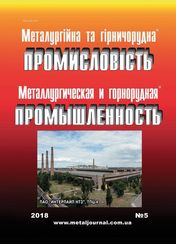Main principals of design and adoption experience of Automatic Control System by plate mills |
\\ Статьи
The functional structure of Automatic Control System of plate mill reflecting the development experience of Kiev automatic controls institute is given. Control functions of rolling modes are characterized, approaches of mathematical models of rolling characteristics building and adaptation are described, the results of Automatic Control System adoption are presented.
Key words: plate mill, Automatic Control System (ACS), strategies of control, mathematical models.
Plate mill operating benefit is determined by quality index of rolled stock and rolling process.
Quality index of rolled stock includes:
- geometry fidelity: average thickness hav of a plate, longitudinalδhl and transverse gage interference δhtr, width b, length l;
- plate shape (flatness fault);
- mechanical properties (yield point, tensile strength, elongation ratio, impact resistance at different temperatures, etc.).
- surface condition.
Process performance includes:
- productivity (operating time for rolling of one strip);
- power consumption;
- metal take for slabs per ton of rolled stock, which depends on rolling accuracy, amount of cutoff pieces and the last on strip shape;
- expenses for repair-and-renewal operations.
The aims of automatic control of rolling process lie in achievement of optimum relationship of described process rates and, on occasion, control channel separation, achievement the most optimal values of the rates given above. Generalized functional structure of Automatic Control System (ACS) of plate mill, which reflects the experience of developments, fulfilled by Kiev Automation Institute, is given on the figure 1.
The structure refers to multilevel hierarchic decentralized structures. Functions of plate mill ACS according to the character of connections with an object, operating and administration personnel are divided into management and informational functions.
Automatic control of reverse sheet rolling contains three intelligence levels:
- Program-logical and situational control of mill mechanisms, including roller bed, mill rolls, screw-down gears, manipulator heads, anti-crossbreak, descale sprays, etc.
- Automatic control of rolling parameters: longitudinal and transverse thickness, width, temperature lengthwise the strip.
- Control the rolling schedule with output of setpoints to the first and second intelligence levels for achievement the best values of rolling process described.
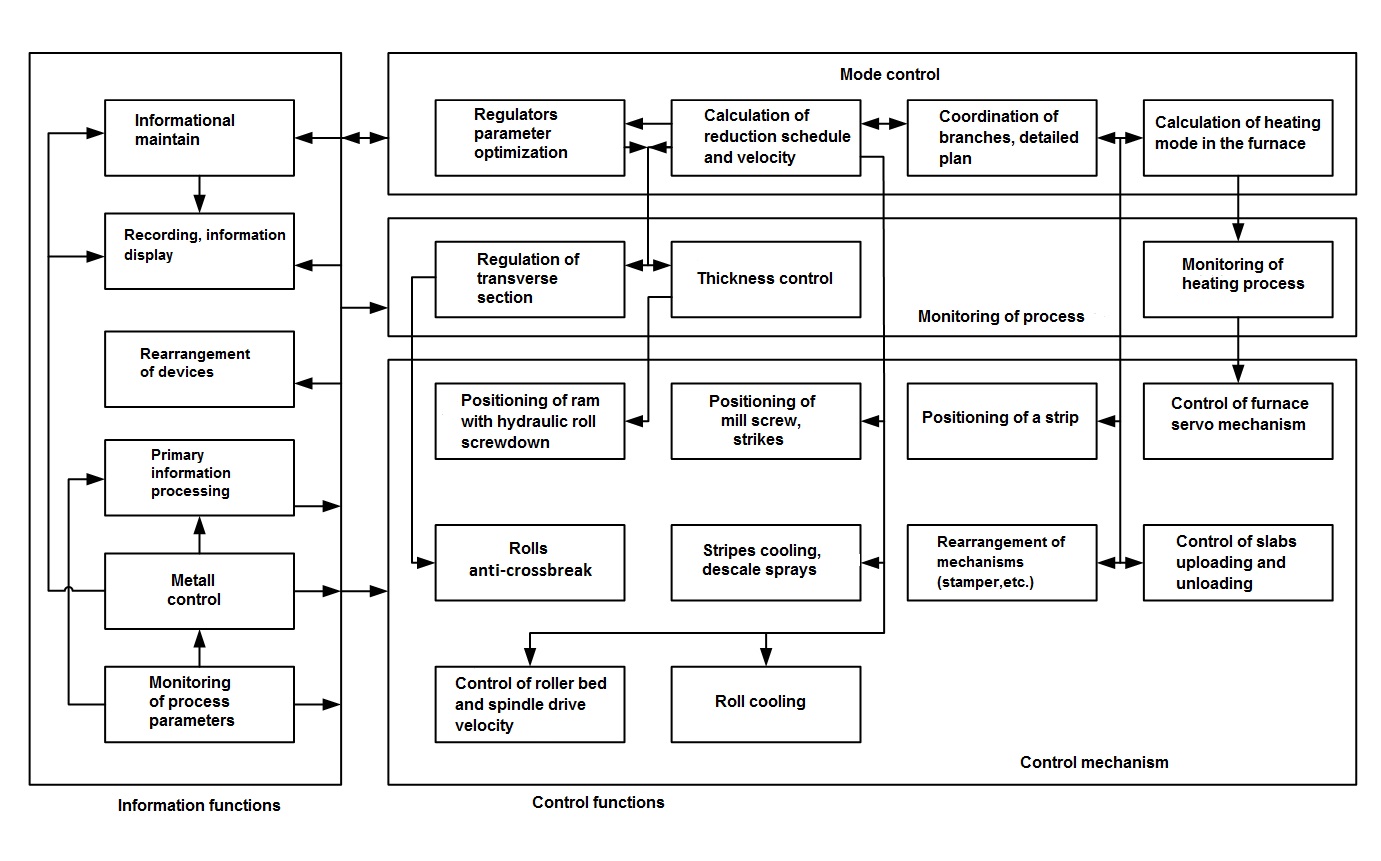
Figure 1 Generalized functional structure of plate mill ACS.
On the figure 2 there depicted three-stand mill (vertical and two horizontal mills) for reverse rolling of thick sheet with traditional control channels and means (parameters) of technological control of the rolling process, also the three mentioned above intelligence level of automatic control. Control of rolling process (cobbing trough passes, velocities, cooling) provides the main effect in formation of quality indexes of rolled stock and rolling process, mentioned above.
The main control level functions of rolling schedule are given on the figure 3 and 4. The choice of optimized index in the task of rolling automatic control is conditioned by its economical significance, character of affiliation with technological parameters and management. Billet metal-flow coefficient per ton of rolled stock is one of the most economically significant for plate mill, or the output of metal yield, which depends on the accuracy of realization of specified geometrical dimensions of rolling line. The accuracy of geometrical dimensions of thickness (h) and width (b) is connected with accuracy of choice and realization of guiding (roll opening) in dimensional gaps.
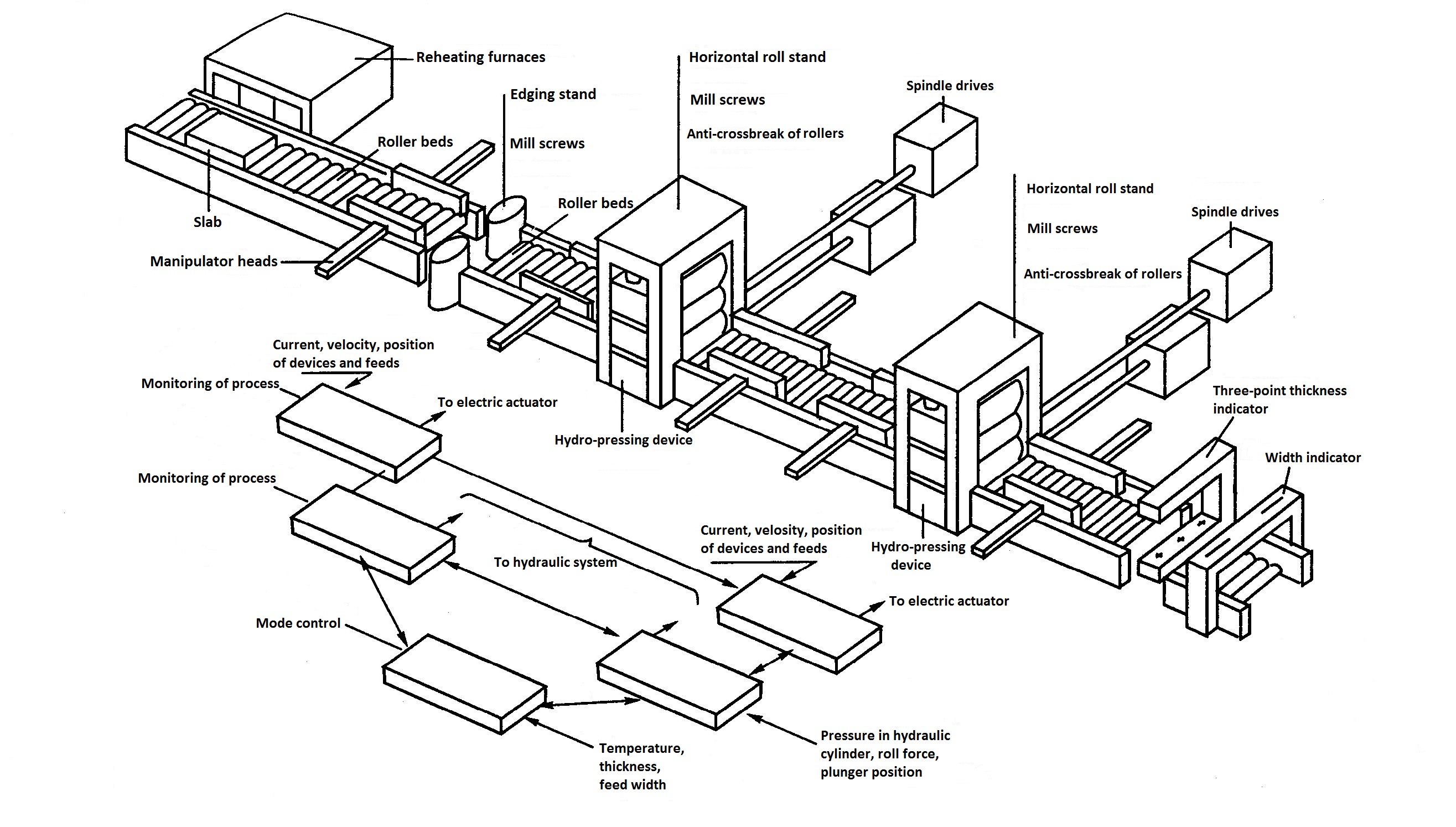
Figure 2 Automatic plate mill
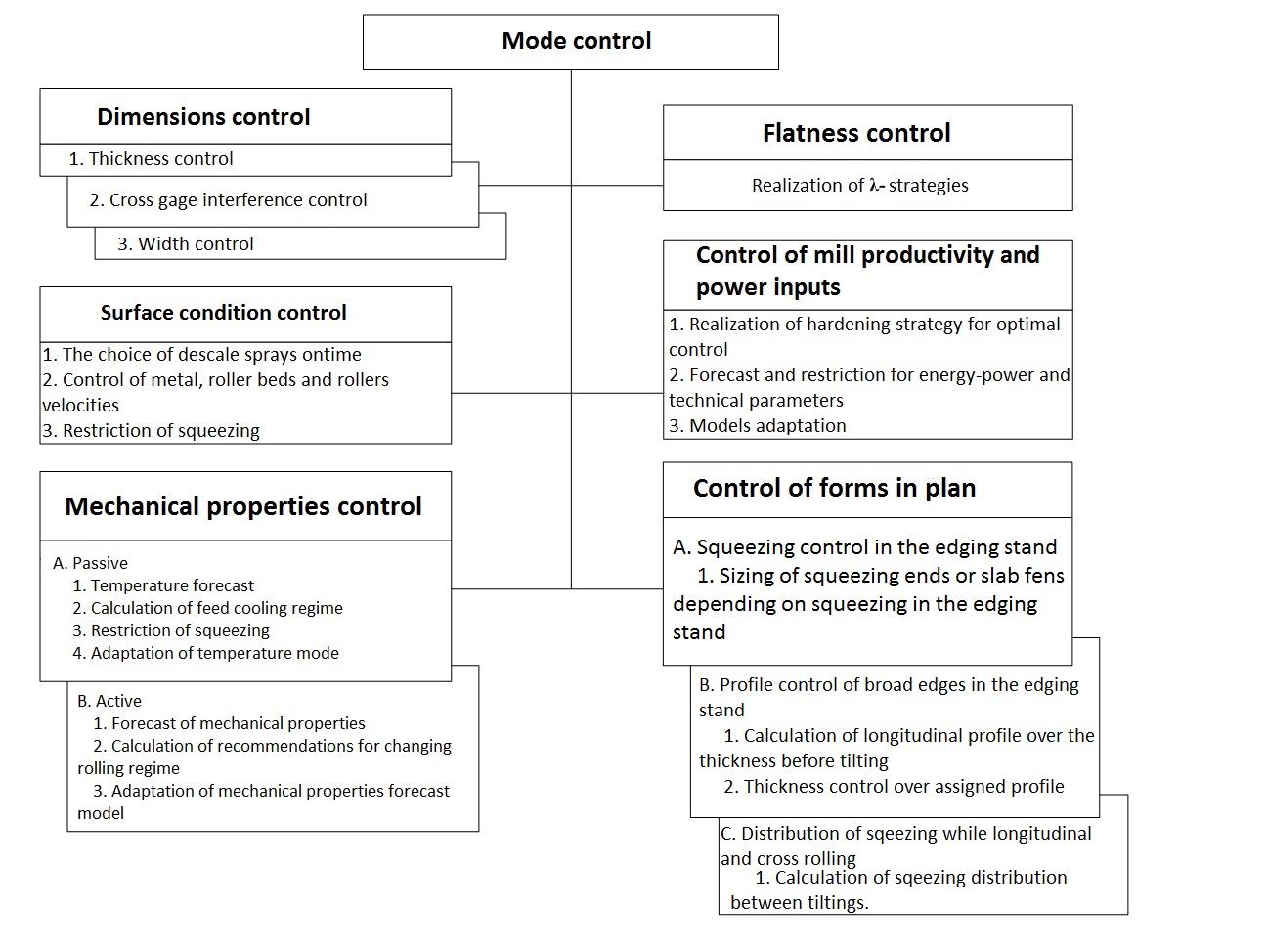
Figure 3 Functions of modes controlling
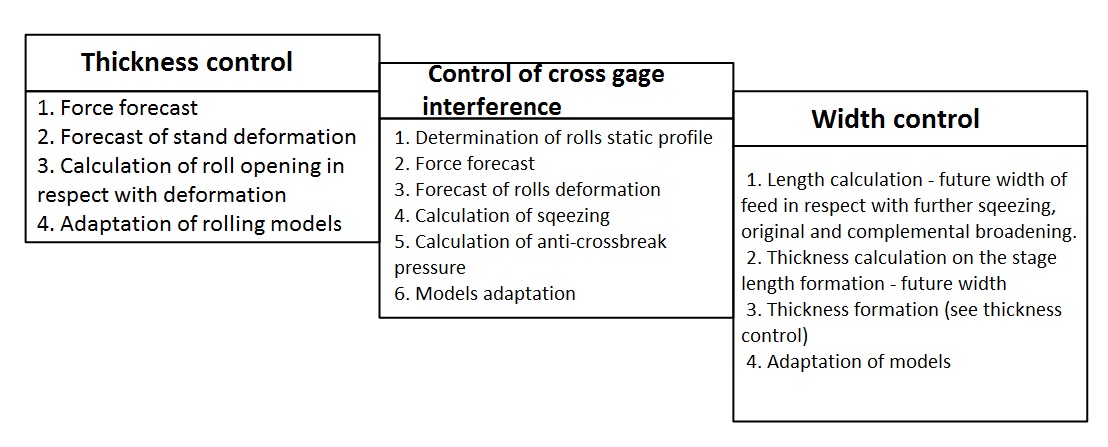
Figure 4 Functions of dimensions controlling
In respect with characteristics of the object mentioned above, proving the minimum value of deviation in the thickness (width) of the bar from the fixed value (hз, bз) is an independent task, which lies in determination of roll opening of horizontal and vertical stand (НN and ВK) till metal pickup [1]:
![]() (1)
(1)
![]() (2)
(2)
where σ is root-mean-square deviation of actual values from fixed ones; P, Р* are actual and fixed possibilities of arising of minimized deviations; ![]() ,
, ![]() are parameter vectors of mill and rolling stock.
are parameter vectors of mill and rolling stock.
The tasks (1 and 2) solution is provided by forecast of corresponding parameters of the mill and rolling stock in accordance with mathematical models. Along with the tasks (1 and 2) there exists the task of optimization according to one of the three indexes (Мe - equivalent torque of the spindle drive, W - electric energy consumption for rolling , Тc- rolling cycle time, which is determined by all the course of rolling) at fixed on the accepted level values of other indexes of feed and rolling process. This task is phrased as follows [2]:
Find ![]() ,
, ![]() ,
, ![]() , N,
, N,
providing min Тc where Мe= Мst,
or min Мe where Тc = Тcd,
or min W where Мe = Мst, Тc = Тcd
within the restrictions
![]()
![]()
![]() (3)
(3)
![]()
![]()
![]()
where ![]() is the summary (defined) reduction per cycle (stage) of rolling;
is the summary (defined) reduction per cycle (stage) of rolling; ![]() number of pass;
number of pass; ![]() ,
, ![]() – minimum and maximum accepted reduction in the i-th pass;
– minimum and maximum accepted reduction in the i-th pass; ![]() ,
, ![]() ,
, ![]() M nom, M st i, M acc – nominal, static, acceded torques of rolling engine; C – coefficient, connecting acceleration with dynamic torque of engine; А, C – constant values for defined feed;
M nom, M st i, M acc – nominal, static, acceded torques of rolling engine; C – coefficient, connecting acceleration with dynamic torque of engine; А, C – constant values for defined feed; ![]() ,
, ![]() - minimum and maximum temperature limit of the end of rolling; Тcd – defined rolling time; C – cross;
- minimum and maximum temperature limit of the end of rolling; Тcd – defined rolling time; C – cross; ![]() – relative cross gage interference of feed; j – number of pass, where feed deformation takes place (nonflatness);
– relative cross gage interference of feed; j – number of pass, where feed deformation takes place (nonflatness); ![]() – the velocity in i-th pass and its minimum and maximum accepted values (restriction concerns the capture velocity
– the velocity in i-th pass and its minimum and maximum accepted values (restriction concerns the capture velocity ![]() ,steady
,steady ![]() , discharging
, discharging ![]() and velocity of roller bed
and velocity of roller bed ![]() ).
).
On the stage of width breakup from the task (3) the two last conditions are excluded – rolling of plane sheet and observance of finishing temperature of rolling. Solution of the task of automatic control with rolling modes is based on the usage of formalized description of process (mathematical models), adaptation of this description according to the results of measuring the coordinates of process states, usage of state values of controlled object of automatic aggregate and neighboring plots of processing line. Under the conditions of absence the full analytical process description (for example, description of forming the line in plane, formation of mechanical properties of rolling and condition of its surface, etc), absence of automatic means for determination of values for some object state (flatness, roll surface condition, etc) and condition of external, in regard to automatized field, parts of processing line, human’s participation is necessary condition for solution of all the tasks of automatization.
Although human is inferior to automatics in speed and accuracy of information processing, the reliability of performance (operating quality depends on a lot of factors, including psychological), he may gather experience and in future use unformalized experience while operating, orient and make decisions in unforseen situations , control his organs of the senses and estimate values and changes in process state, means for estimation of which, are absent in Automatic Control Systems.
Rolling control process may be divided into three main stages: choice of controlling strategy (for example, variation law of energy-power parameters in passes); choice and realization of management providing the strategy fulfillment (for example, calculation of thickness and openings in passes and processing with fixed accuracy of all these openings); receiving information about objects condition and neighbouring with it parts of processing line, estimation of control results.
While plate mill automatization there appeared an approach, which provides the usage of set of “rough” control strategies received beforehand (apart the process movement) for certain process performance envelope. The choice of one of the strategies is fulfilled in respect with concrete situation at the automatic object. As a rule such choice is made by an operator, who has information concerning the controlled object state in general. In the initial phase of ASC conversion by rolling on the plate mill control strategy is used, which uses the experience of operators and mill technologists and also experience fixed while manual operation of rolling (i.e. the strategy is set by an operator). This allows on the initial stages of ACS adoption to get an effect from automatization and to store static data, necessary for adoption of “rough” control strategy optimizing the whole process [3].
In such a way while rolling modes control on the plate mill, the principals of automatic man-computer control are used. The strategies of automatic rolling modes control must provide computation and realization of control in accordance with strategies found in advance, which guarantee optimal or almost optimal process in specific ranges of process variations. Strategies realization in appropriate conditions of technological process flowing is based on forecast of its parameters. The task of forecast of characteristics for process flowing (energy-power parameters, elastic deformations, etc) is independent and the possibility of its solution depends on the required forecast term (pass, stage, cycle) and required accuracy. Herein, all the rolling control strategies may be divided into two classes: to the first one refer strategies requiring short-range forecasting for realization (a pass ahead), to the second one refer strategies requiring long-range forecasting (for a stage, cycle of rolling). To the first ones mentioned above one may refer, for example, critical strategy from the beginning of the cycle for which each of the reductions (starting from the first pass) are chosen maximum allowable in energy-power and technological limits in respect with defined overall reduction per stage or cycle of rolling.
To the second class refer the strategies of rolling with uniform distribution of torque along the passes with permanent drawing, critical strategy from the end of cycle, and also strategy providing the equality of reductions in the pair of passes at even summary number of passes at the stage. The described division of strategies into classes reflects the peculiarities of their algorithmic realization.
So, algorithms of realization of short-range forecasting strategies of rolling parameters are characterized by minimal amount of computations and use less complex (often recurrence) mathematical models for rolling parameters forecasting.
Realization of strategies, requiring long-range forecasting of technological parameters, are usually build on control computation before starting the rolling process with usage of mathematical models of roll force and mill deformation. As actual parameters differ from expecting ones, in result of calculations there appear mistakes leading to understatement or overstatement the number of passes. In the first case it may lead to limit exceedance of energy-power parameters, which is inadmissible, in the second case – to decrease of productivity. That is why after each pass the control calculation on the remaining portion of cycle is repeated, the accuracy of calculations increases thanks to reduction of forecasting term and also thanks to refining the models, executed with the help of adaptation.
But mistakes, accumulated in the beginning of rolling process will condition not only non-optimal control distribution at passes, but also may lead to increase of numbers of rolling passes at least for the first billet in the lot. Besides, as the mistakes with understatement of passes rate are impossible, there added the necessary shift of calculation data to the area, where the probability of mistakes with overstatement of passes amount increases. It should be also noted that the amount of computations realizing the described choice of control is rather great and causes some difficulties while their realization in real scale of time.
Considering abovementioned, algorithmic realization of strategies of the 2nd class is supposed with exclusion of long-range forecasting. It is based on the reconstruction of mechanism of control choice from cycle to cycle according to actual data and also under the following statements:
- Rolling of the fist billet in the lot under the critical strategy from the beginning of the cycle, in all the cases guarantees rolling in respect with all the limits for minimal number of passes and do not require long-range forecasting;
- For each following billet the rolling parameters may be calculated with usage of mathematical models of forecasting the necessary parameter under its actual meaning in the same-name pass (the same number) of the executed cycle.
The described reduction calculation of the lot of identic billets provides asymptotic convergence of the reduction program to the definitive one. As it was mentioned above, the calculation of control action is based on the forecast of technological parameters of rolling with the help of mathematical models. Herein the models of metal plastic deformation (rolling force) and elastic deformation of the mill, rolling torque models, thermal processes while rolling, models describing the process of feed formation in space and plan [4,5].
The two approaches are used while building mathematical model. The first supposes the obtainment of initial mathematical model on the basis of physical process analysis taking place while formation of certain parameters, and development of the procedure of further model adaptation under the actual rolling parameters (theoretical models). Initial constants data entering theoretical models, is determined during experiments. The second approach supposes model formation by means of static analysis of surveillance over the technological process run and establishing correlation relationship between its main parameters (experimental models).
Continuous theoretical and experimental process analysis precedes the development of theoretical models; model of such type are accessible due to their flexibility. However, theoretical models describing the rolling process, as a rule, are complex and lengthy. It is explained by high complexity of theoretical description of the process, considering all the factors taking place while real rolling. Besides, some arguments of models are nonobservable in the process of real rolling on the plate mill as a result of measuring equipment absence.
While development of control algorithm with usage of computers, static models are frequently used. Herein the structures of models, received on the same mill, as a rule, may be applied on the other mills with similar rolling conditions.
Mathematical modeling of an object or process under experimental information is usually fulfilled by means of regression analysis. Except regression analysis one of the methods of object modeling is the method of compound arguments accounting. In ACS of plate mill there used both of the described above model types and also semiempirical models combining the characteristics of both types of models. In automatic control algorithms the rolling modes widely use recurrent models, which use actual values of rolling force and parameters of deformation zone in realized passes thus allowing to exclude from the model structure quantitative variables that are difficult to determine (deformation resistance, coefficient of friction), which remain almost changeless within the cycle of rolling or even rolling of a lot of billets. These recurrent dependences are as follows:
Pi=Рi-1 f(Gi,Gi-1), (4)
where Pi, Рi-1 are foreseeable force in the i-th pass and actual in the (i-1) pass; Gi, Gi-1 – expectable parameters of deformation zone in i-th pass and actual in (і-1)-th pass.
Recurrent dependences allow to speed up the calculation process with rather high accuracy of forecast, excluding the cycle first pass or rolling stage forecast.
The variation ranges of mathematical models parameters are determined by both rolling strips characteristics and by change of plate mill machinery condition while rolling, which may essentially change with time. This is explained by mechanical wear and change of thermal profile of working rolls while rolling and after roll change, change of strip cooling conditions depending on the temperature of the medium, variation of chemical composition and physic-mechanical properties of rolled metal, change of area input variables of models and other factors.
In respect of existing mill nonstationarity as an object of control, caused by abovementioned reasons, mathematical models obtained during object analysis and used while designing of automation system, should be continuously specified (adopt) while exploitation at the working object. If the specification is not fulfilled, the models will not sufficiently reflect the process and with their help it will be impossible to forecast behavior of an object and control it. As a result one is forced to face with less or more initial uncertainty.
The possibility of forecast at short priori information is provided by appliance of adaptation methods, which reduce the initial uncertainty thanks to information, received in the process of object operation. Information about the process is used for adaptation of mathematical models with the aim of maximum approximating of calculated values of parameters to their true values. The task of adaptation comes down to estimation of model parameters under the results of evaluation of input and output variables, received in conditions of normal object operation. Here under parameters evaluation one means experimental determination of their values under the condition that the structure of model is already known. Herein it is supposed that the input and output variables, which are connected, are already known and that this variables may be determined during normal exploitation.
There exists rather great amount of models adaptation algorithms. They differ both in memory size, and the number of calculation on each stage of adaptation. One of the most widespread multistage adaptation algorithms is ordinary least squares technique (OLS) or recursive least-square method. However, these adaptation algorithms require greater volume of experimental data. Single-stage algorithms became widely used in ACS. The most widespread among single-stage algorithms is stochastic approximation algorithm and phased training algorithm (Kaczmarz algorithm). The results of the abovementioned adaptation methods applied to mathematical models of ACS of plate mill are described in work [2].
As it was mentioned above, in the process of automatic calculation of reduction mode control mathematical models of main rolling parameters are used, which provide the required accuracy of output coordinates fixed values of automation objects. Herein the receipt of highly neat characterizations is connected with requirement strengthening to the quality of technological information, complicating of models and adaptation procedure. The tolerated error in getting the specified coordinates of state depends on the value of concrete parameter in technological process. So the mathematical models of rolling force and stand deformation are the main ones for control calculation, which condition the defined geometrical parameters of a sheet and consequently should provide reasonable accuracy of calculation. There are other, more simple requirements for models of calculation of limiting draft values.
There given an impact assessment of mathematical models accuracy of different parameters on the deviation of the last from the fixed values and their significance in observation of fundamental requirements for ACS of plate mill in [1]. Creation of ACS of plate mill presents systemic problem, where the tasks of mills analysis are solved as objects of automatization, developments of mathematical and technical system supply and adoption of ACS on the object.
On the initial operating stages concerning plate mill automatization it has already became obvious that ACS development engineer, who is keen in the control engineering area and monitoring, but who has not studied the peculiarities of manufacturing process and mill equipment, that is tended to be rearranged on an automatic basis of control, they will not be able to get high capacity results while ACS introduction. Attempts to fill these gaps by means of cooperation with technologists of particularized institutes and enterprises could give only narrow positive result.
As a result the development team of ACS of plate mill fulfilled technological researches of rolling process on the plate mill in the former USSR and abroad. There was accumulated technological knowledge on the level of highly-skilled professionals technologic research institutes and corresponding companies, that allowed to develop and implement in operation a series of effective ACS on the plate mill 2250 on Alchevsk metallurgical complex, plate mill 3600 on the “Azovstal” metallurgical complex and plate mill 3600 on the Bchilaiskii metallurgical complex, plate mill 5000 on the “Izhorsk Plant”, sheet mill 1500 on Moscow metallurgical complex “Serp i Molot”. These systems are characterized by modern level of automatization of technological process and high efficiency of their usage.
Analyzing the results of ACS introduction on the plate mill, one may mark the following main criteria of automatization efficiency:
- improvement of rolled stock quality, first of all owing to reduction of tolerances on geometry of sheets;
- metal saving;
- energy saving;
- increasing the frequency of rolling;
- reduction of breakdown rate and increase of equipment longevity;
- relieving of operational staff working.
So, for example, on the mill 2250 on Alchevsk metallurgical complex the mean-square error of width spacing has reduced from 20 mm at manual control to10 mm at automatic, and mean-square error of finite thickness has reduced from 0.21mm to 0.11-0.13 mm. On the mill 3600 on “Azovstal” metallurgical complex the adoption of ACS allowed to reduce mean-square error of sheet finite thickness from 0.15-0.24 mm to 0.07-0.11mm. This data visually characterize the efficiency of automatic modes of mill operation.
The experience of exploitation of ACS of technological rolling process on plate mills has confirmed the actuality and efficiency of works concerning automatization. In conditions of intensification of production, automatic control allows the rolling process to be sound and to use the resources available optimally.
Conclusions
Presented in the article main principals of ACS design for plate mill were used during development and ACS adoption in some plate mills. The results of adoption of ACS for plate mill have confirmed the effectiveness of these principals usage.
References

